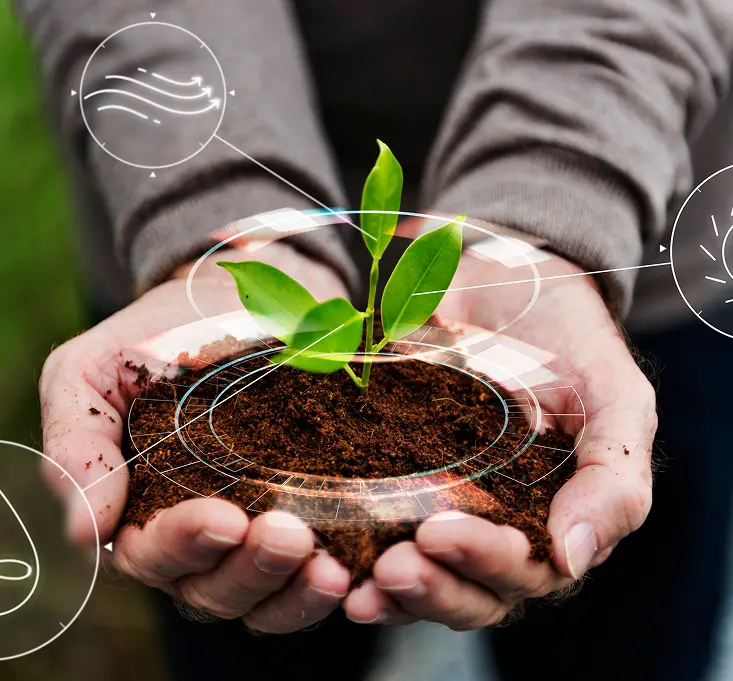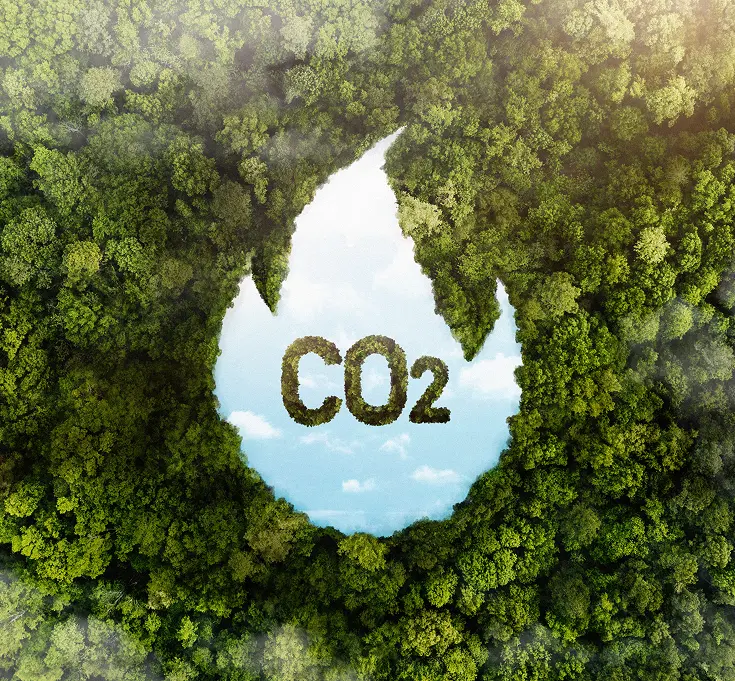PwC Reveals Lagging Progress in Sustainability Practices

Sustainability reporting is becoming more important for businesses, but many Canadian companies are struggling to keep up, as highlighted by PwC Canada’s 2025 report. While many are working to include sustainability in their operations, gaps in reporting could lead to risks of not meeting new rules and missing chances to grow. For example, most companies don’t share how climate-related opportunities could impact their finances—something that can build trust with investors. Furthermore, skipping steps like assessing key sustainability issues and engaging with stakeholders makes it harder for companies to prepare for the future and address risks effectively. To improve, companies should focus on combining their various sustainability reports into one, making sustainability part of their overall strategy, and setting clear goals to show progress. PwC emphasizes the importance of being transparent about risks and how they’re managed, which can build trust and confidence among investors and other stakeholders. By showing measurable progress, businesses can demonstrate how sustainability goes beyond following rules—it can help drive long-term growth. As expectations evolve, Canadian companies have the chance to show leadership and create real value through stronger sustainability practices. Source: Pwc Canada
Shifting Gears: Honda and Suzuki Join Tesla’s European Emissions Pool in 2025 Amidst Industry-Wide Compliance Push

In a move highlighting the intensifying pressure to meet stringent environmental regulations, Japanese automotive giants Honda and Suzuki have officially joined forces with U.S. electric vehicle pioneer Tesla in a European Union (EU) carbon emissions pool for the year 2025. An EU filing revealed on Monday that this alliance aims to ensure compliance with the EU’s intermediate carbon reduction targets, commonly known as CAFE (Corporate Average Fuel Economy) standards. This development underscores the significant challenges traditional automakers face in rapidly transitioning their fleets to meet increasingly ambitious emissions goals. By pooling their emissions with Tesla, a company whose entire output boasts zero tailpipe emissions, Honda and Suzuki gain access to valuable “credits” that can offset emissions from their internal combustion engine (ICE) vehicle sales. Source: Reuters
Capturing Carbon, Powering the Future: The Role of Carbon Capture in Biogas Plants

Introduction Biogas is emerging as a key player in the renewable energy landscape, offering a sustainable alternative to fossil fuels.Enter carbon capture—a game-changing technology that is revolutionizing biogas production and accelerating the transition to a truly circular economy. Biogas produced through the anaerobic digestion of organic materials by utilizing waste materials, biogas helps reduce methane emissions, a greenhouse gas far more potent than CO2. However, the process still releases CO2 into the atmosphere. ;; But here’s the twist—the CO2 in biogas isn’t just an unavoidable byproduct. With the right technology, it can be captured and repurposed, reducing emissions while creating new economic opportunities. This is where carbon capture steps in. The Power of Carbon Capture Carbon capture technologies in biogas plants work by separating CO2 from methane, refining the biogas into high-quality biomethane. The most common methods include: Amine Scrubbing: A widely used technique where biogas is passed through an amine solution that selectively absorbs CO2. Pressure Swing Adsorption (PSA): This method uses solid adsorbents to separate CO2 by exploiting pressure differences. Membrane Separation: Specialized membranes allow methane to pass through while trapping CO2. By implementing these technologies, biogas plants can enhance efficiency, reduce emissions, and even generate additional revenue. The Benefits: Capturing CO2 significantly reduces the carbon footprint of biogas production, playing a crucial role in climate change mitigation. Removing CO2 increases methane concentration, resulting in premium-quality biomethane that can be injected into natural gas grids or used as a transportation fuel. Captured CO2 has various commercial applications, including: Carbonation in the food and beverage industry. Enhancing plant growth in greenhouse agriculture. Production of e-fuels and specialty chemicals. Long-term carbon storage initiatives. By repurposing CO2 instead of releasing it, carbon capture helps create a closed-loop system where waste is minimized, and resources are fully utilized. Selling captured CO2 or upgrading biogas into high-value biomethane can enhance the financial viability of biogas plants. Challenges and Opportunities Despite its benefits, carbon capture in biogas plants faces some hurdles: Cost: The initial investment for carbon capture technologies can be high. Energy Demand: Some methods require additional energy, potentially affecting overall sustainability. Infrastructure Needs: Effective transportation and utilization of captured CO2 require further infrastructure development. However, innovation is driving progress. Advances in capture efficiency, scaling economies, and supportive policies are making carbon capture more feasible and attractive for biogas operators. The Future of Biogas and Carbon Capture As the world moves toward a low-carbon future, integrating carbon capture into biogas production is more than just an environmental win—it’s an economic and technological leap forward. By harnessing these advancements, we can unlock the full potential of biogas as a sustainable energy source, reducing emissions while generating valuable byproducts. The journey toward a cleaner future isn’t just about adopting new technology—it’s about rethinking how we use our resources. With continued innovation and investment, carbon capture in biogas plants can help power a world where sustainability isn’t just an aspiration but a reality.
Amazon Invests in Three New Wind Projects to Boost India’s Clean Energy

Introduction Amazon is accelerating India’s clean energy transition with three new wind projects across Karnataka, Maharashtra, and Tamil Nadu, adding 379 megawatts (MW) of clean power to the grid. This investment strengthens Amazon’s commitment to 100% renewable energy operations and supports India’s goal of generating 50% of its electricity from non-fossil sources by 2030 The Three New Wind Farms: CleanMax Koppal (100 MW), Karnataka – In partnership with CleanMax, a leading renewable energy provider. BluPine Solapur (99 MW), Maharashtra – A collaboration with BluPine Energy, a renewable energy platform. JSW Energy Dharapuram (180 MW), Tamil Nadu – Partnering with JSW Energy, a major player in India’s power sector. This expansion brings Amazon’s renewable energy portfolio in India to 53 solar and wind projects, generating over 4 million megawatt-hours (MWh) of carbon-free energy annually—enough to power 1.3 million Indian homes. As one of the world’s largest corporate buyers of renewable energy, Amazon has invested in over 600 clean energy projects globally. Under its Climate Pledge, the company is working towards net-zero carbon emissions by 2040. Amazon’s continued investments in India’s renewable energy sector underscore a growing corporate shift toward sustainability, reinforcing the country’s position as a global clean energy leader. Source: Amazon
Amazon’s Sustainable Adaptation: Pioneering a Greener Future

Amazon, the world’s largest e-commerce giant, has long been known for its innovation, efficiency, and market dominance. However, with its rapid expansion, the company has faced increasing scrutiny over its environmental impact. In response, Amazon has embarked on an ambitious sustainability journey, committing to reducing its carbon footprint and driving industry-wide change. From renewable energy investments to eco-friendly packaging, Amazon’s sustainable adaptation is shaping the future of corporate responsibility. Let’s explore how the company is balancing business growth with environmental stewardship. Amazon’s Climate Pledge: A Bold Commitment In 2019, Amazon co-founded The Climate Pledge, a commitment to achieving net-zero carbon emissions by 2040, a decade ahead of the Paris Agreement. This initiative has since attracted over 400 signatories, including major corporations like Microsoft, Unilever, and Visa. Amazon’s pledge focuses on three key areas: ✔ Decarbonizing Operations – Transitioning to renewable energy and reducing emissions across its supply chain. ✔ Investing in Sustainable Technologies – Supporting climate-focused startups and clean energy innovations. ✔ Prioritizing Transparency – Regularly reporting emissions data and sustainability progress. This commitment has set a new benchmark for corporate sustainability, challenging other tech and retail giants to follow suit. Renewable Energy: Powering a Greener Amazon Amazon is one of the largest corporate buyers of renewable energy in the world. The company has committed to powering 100% of its operations with renewable energy by 2025—five years ahead of its original 2030 target. Key initiatives include: 🔋 Solar and Wind Investments: Amazon has over 400 renewable energy projects worldwide, including wind farms in the U.S., Europe, and Asia, as well as massive solar power deployments. 🔋 Sustainable Data Centers: Amazon Web Services (AWS), which powers a significant portion of the internet, is shifting towards energy-efficient data centers powered by renewables. 🔋 Battery Storage Projects: Amazon is investing in large-scale battery storage systems to enhance grid stability and reduce reliance on fossil fuels. By championing renewable energy, Amazon is not only reducing its own emissions but also accelerating the global transition to clean energy. Sustainable Packaging: Less Waste, More Innovation With billions of packages shipped each year, Amazon has taken bold steps to minimize packaging waste and improve recyclability. Notable packaging initiatives: 📦 Frustration-Free Packaging (FFP) – Designed to be 100% recyclable, reducing unnecessary plastic and excess materials. 📦 Ship in Own Container (SIOC) – Encourages brands to design packaging that can be shipped without additional Amazon boxes. 📦 Plastic Reduction Efforts – Amazon has eliminated over 1 million tons of packaging waste by switching to paper-based alternatives. These initiatives reflect Amazon’s commitment to a circular economy, reducing waste while maintaining customer convenience. Sustainable Transportation: Greening the Supply Chain Amazon’s vast logistics network is a major contributor to its carbon footprint. To combat this, the company is investing in sustainable transportation solutions. Steps toward eco-friendly deliveries: 🚚 Electric Delivery Vehicles – Amazon ordered 100,000 electric vans from Rivian, aiming for full deployment by 2030. 🚚 Alternative Fuels – Experimenting with hydrogen-powered trucks and biofuels for its long-haul fleet. 🚚 Drone Deliveries – Testing electric Prime Air drones to reduce last-mile delivery emissions. By revolutionizing its logistics operations, Amazon is working to make zero-emission deliveries a reality. Investing in Climate Solutions Beyond its own operations, Amazon is funding innovative climate solutions through The Climate Pledge Fund—a $2 billion investment program supporting startups in areas like carbon capture, sustainable materials, and renewable energy. Notable investments include: 🌿 CarbonCure Technologies – Capturing CO₂ for use in concrete production. 🌿 Infinium – Developing low-carbon fuels for transportation. 🌿 ZeroAvia – Advancing hydrogen-powered aviation. By backing breakthrough innovations, Amazon is driving the next generation of climate solutions. Challenges & Criticisms Despite its sustainability efforts, Amazon still faces challenges: ⚠ High Carbon Footprint – Amazon emitted 71.54 million metric tons of CO₂ in 2022, raising concerns about its long-term sustainability. ⚠ Labor & Ethical Issues – Warehouse working conditions and fair wages remain areas of scrutiny in Amazon’s ESG strategy. ⚠ Overpackaging Concerns – While improvements are being made, some customers still report excessive packaging waste. Amazon acknowledges these concerns and has pledged to improve transparency and accelerate its sustainability goals. Conclusion: A Model for Corporate Sustainability? Amazon’s sustainable adaptation is a testament to the power of corporate responsibility. While challenges remain, the company’s bold climate commitments, renewable energy investments, and supply chain innovations position it as a leader in sustainability. As consumers and investors demand greener practices, Amazon’s journey underscores the importance of sustainable transformation—proving that business success and environmental responsibility can go hand in hand. 🔹 Can Amazon achieve net-zero by 2040? 🔹 Will its sustainability efforts influence other corporations? Only time will tell. But one thing is clear—Amazon is reshaping the future of green business.
The United Nations Sustainable Development Goals: A Blueprint for a Better Future

Introduction The Sustainable Development Goals (SDGs), established by the United Nations (UN) in 2015, represent a universal call to action to eradicate poverty, protect the planet, and ensure prosperity for all by 2030. These 17 goals provide a comprehensive framework addressing the world’s most pressing challenges, from climate change to inequality, ensuring sustainable progress without compromising future generations. The 17 Sustainable Development Goals No Poverty – Ending all forms of poverty worldwide by providing financial access, job opportunities, and social protection. Zero Hunger – Ensuring food security, improving nutrition, and promoting sustainable agriculture. Good Health and Well-being – Guaranteeing universal access to quality healthcare and promoting well-being for all. Quality Education – Providing inclusive and equitable education while fostering lifelong learning opportunities. Gender Equality – Empowering women and girls, eliminating gender-based discrimination, and ensuring equal opportunities. Clean Water and Sanitation – Ensuring availability and sustainable management of water and sanitation for all. Affordable and Clean Energy – Promoting access to reliable, sustainable, and modern energy sources. Decent Work and Economic Growth – Encouraging inclusive and sustainable economic growth, employment, and fair working conditions. Industry, Innovation, and Infrastructure – Building resilient infrastructure, fostering innovation, and promoting sustainable industrialization. Reduced Inequality – Addressing disparities in wealth, opportunity, and representation among different social groups. Sustainable Cities and Communities – Making urban environments inclusive, safe, resilient, and sustainable. Responsible Consumption and Production – Encouraging sustainable production and consumption patterns to minimize waste and environmental impact. Climate Action – Urging global action to combat climate change and its impacts. Life Below Water – Preserving oceans, seas, and marine resources for sustainable development. Life on Land – Protecting terrestrial ecosystems, combating desertification, and halting biodiversity loss. Peace, Justice, and Strong Institutions – Promoting peaceful societies, justice for all, and accountable institutions. Partnerships for the Goals – Strengthening global partnerships to support and achieve sustainable development targets. Why the SDGs Matter The SDGs provide a unified framework that encourages governments, businesses, and individuals to take responsibility for creating a more sustainable world. By aligning economic growth with environmental protection and social inclusion, these goals help address global challenges in an integrated way. The Role of Businesses and Entrepreneurs Businesses play a crucial role in achieving the SDGs. Entrepreneurs and corporations can integrate sustainable practices into their operations, invest in green technologies, and support fair labor practices. Companies that align with the SDGs can gain a competitive edge, attract conscious consumers, and contribute to long-term global progress. How Individuals Can Contribute Individuals can also contribute to the SDGs by adopting sustainable lifestyles, reducing waste, supporting ethical brands, and advocating for policies that promote social and environmental responsibility. Small daily actions, such as conserving energy, reducing plastic use, and supporting education initiatives, collectively drive significant change. Conclusion The UN’s Sustainable Development Goals provide a critical roadmap to a more sustainable, equitable, and prosperous world. Achieving these goals requires collaboration between governments, businesses, and individuals. By working together, we can create a future where economic development, environmental preservation, and social well-being go hand in hand, ensuring a better world for generations to come. Let’s work together to make a lasting impact!
